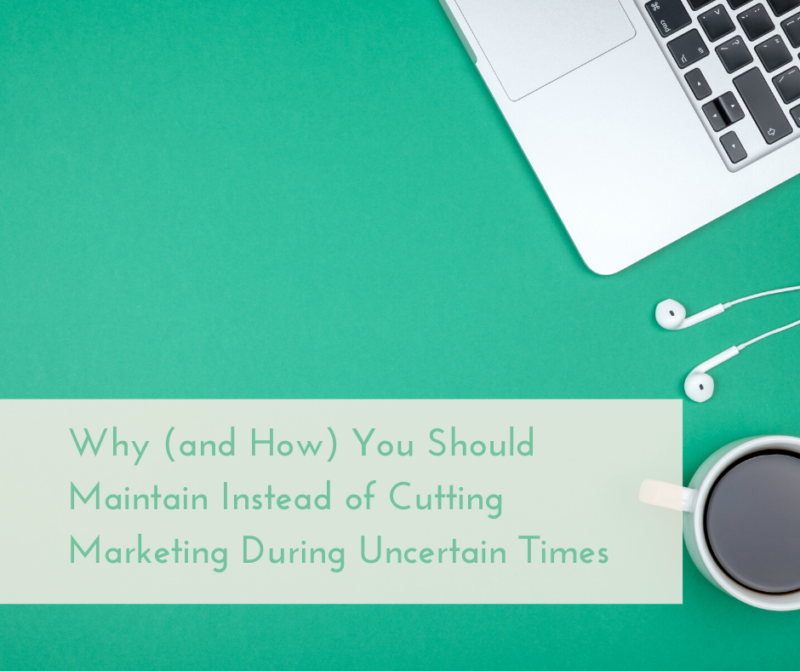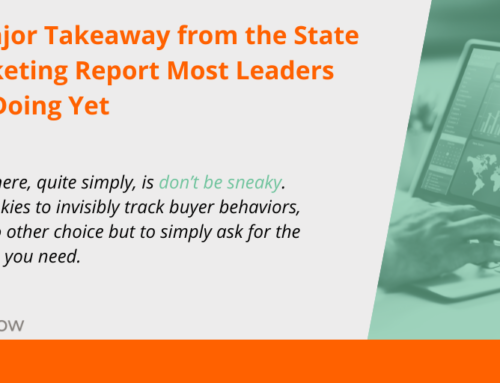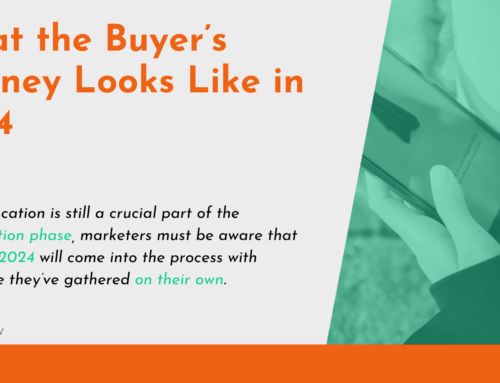
Many businesses are well aware of the impact the “slow season” can have on their businesses. Retailers and other industries that see peak sales during specific seasons throughout the year often have strategies in place to continue growing their businesses when the going gets tough.
Recent events, however, have led many businesses that never typically experience a slow season to see their revenue numbers plummet. In turn, companies begin cutting what they believe are non-essential expenses. In a lot of cases, marketing becomes one of the first casualties of their cuts.
As tempted as you may be to slow or even cut your marketing during uncertain times, it’s actually recommended that you do the opposite. You must work hard to remain top of mind in order to continue to reach, convince, and convert your customers, and during times of famine, that requires additional effort—and budget.
Here are some things you can do during lean times to keep your business alive.
Improve Your Inbound and Outbound Strategies
Inbound marketing is the most cost-effective form of marketing at any given time, but it’s especially helpful during your slowest sales periods. An inbound lead costs more than 60% less than leads you gain through traditional marketing sources. When it comes to times of crisis, that 60% savings can really add up.
To really hone your inbound strategy during this current slow period, start with the content you already have available on your website. Keep in mind that your buyers aren’t in a position to visit your physical stores right now, so they can’t ask questions in person. They’re relying on your website and social media outlets to receive the information they need to make decisions.
Start with your “About” page and verify that all your information is up to date. Then update your “Frequently Asked Questions” page to reflect any new policies or procedures that your company has put into place regarding recent events. Finally, update or create new blogs and articles that provide rich information about your company, your products, your brand’s mission, and your beliefs. Share helpful content about how your products or services could benefit buyers at this time. Now is the time to connect with your buyers, and they really do want to hear from you.
With your website polished and ready, turn to your social media accounts. Be sure to update any information in the “About” sections or bios to reflect changed hours, shipping information, or other policies. If your physical stores are closed, make that abundantly clear, while also providing information about where shoppers can still find your products. Providing clear, relevant, helpful, and timely information will help you continue to build trust with your buyers.
Finally, send emails to your contact list to let them know you’re still open for business and lead them to any new information they may need about your company in the coming months. Attracting new customers can cost 6-7 times more than retaining existing customers. By focusing on your current client base—with upselling, cross-selling, or other retention strategies—you can continue to build revenue more easily than by working to find new prospects.
Because attracting new customers is expensive at even the best of times, focus any of your outbound marketing on building and maintaining awareness of your brand. Keep in mind that many Millennial buyers prefer to work with brands that have causes or missions that align closely with their own. One way to keep top of mind, while also helping during such uncertain times, is to keep buyers and prospects apprised of the steps your company plans to take to help others.
Tell human stories about how your brand and your employees are making a difference during this time of need. Let your buyers know how you plan to take care of your employees during this time, and how you’ll increase their quality of life after the scare is over. Don’t be afraid to be vulnerable as you show your brand’s personality. Be positive without being unrealistic.
With all of these changes made, you’ll be ready to kick your marketing strategy into high gear. Keep that content moving to provide Google with fresh information from your website on a regular basis. Increase your social media posts throughout the day to engage and entertain your followers.
Eliminate Friction
If you rarely experience slow seasons, then you may be unaware of any roadblocks or friction that exists in your marketing and sales strategies. Some businesses are lucky—or smart—enough to have a product or service that people want or need so much that they’re willing to jump through unnecessary hoops to get it.
The problem is, when the times get tough, those roadblocks start to appear. As revenue drops, you’ll become increasingly aware of the various places where customers stop the sale, which then gives you the information you need to determine the reason.
For instance, with retail sales, you may have discovered that on-site purchases have dried up in the wake of social distancing efforts. An online shopping option may be all you need to increase those sales again.
If you already sell online, you may need to feature the most common products on your front page to help users that aren’t internet-savvy find what they need right away. You can place an “add to cart” button right next to the products for those who know exactly what they need, while also keeping a more detailed product page in place for buyers that need more information before making a purchase.
For the various other ways you can eliminate friction with an ecommerce model, check out one of our recent blogs, 6 Must-Haves for an Ecommerce Checkout Page That Converts.
Focus on Customer Service
With sales numbers plummeting, now is the time to make your customers feel as special and wanted as they most certainly are. You can do this by tweaking your customer service and retention policies to make them as happy as they can be while stuck at home. This could include sending personalized thank-you emails after they make a purchase, filled with information about how they can make the most of the products they bought.
Video how-to’s or tutorials go a long way toward helping buyers that may not have access to friends and family who would normally help them learn new skills. You can also include a link to call or chat with a representative so they can get information that your emails may not have fully clarified.
For your biggest brand fans, keep them engaged and entertained with new content on the regular. Give them access to previews, or even ask their advice or opinions on products you may be developing. This will get them excited about making new purchases the moment they have an opportunity to do so.
Finally, be ready with updated return and exchange policies. Without the ability to see, hold, try on, or test new products in person, buyers will be happy to know they can easily exchange or return items that don’t fit their needs as well as they’d hoped. Your kindness and understanding in this trying time will buy you some serious goodwill for future purchases, and could also result in that elusive marketing gold known as word-of-mouth.
If we can be of help as you work to tweak and improve your marketing during uncertain times, don’t hesitate to reach out. We want to help you succeed and even thrive!





